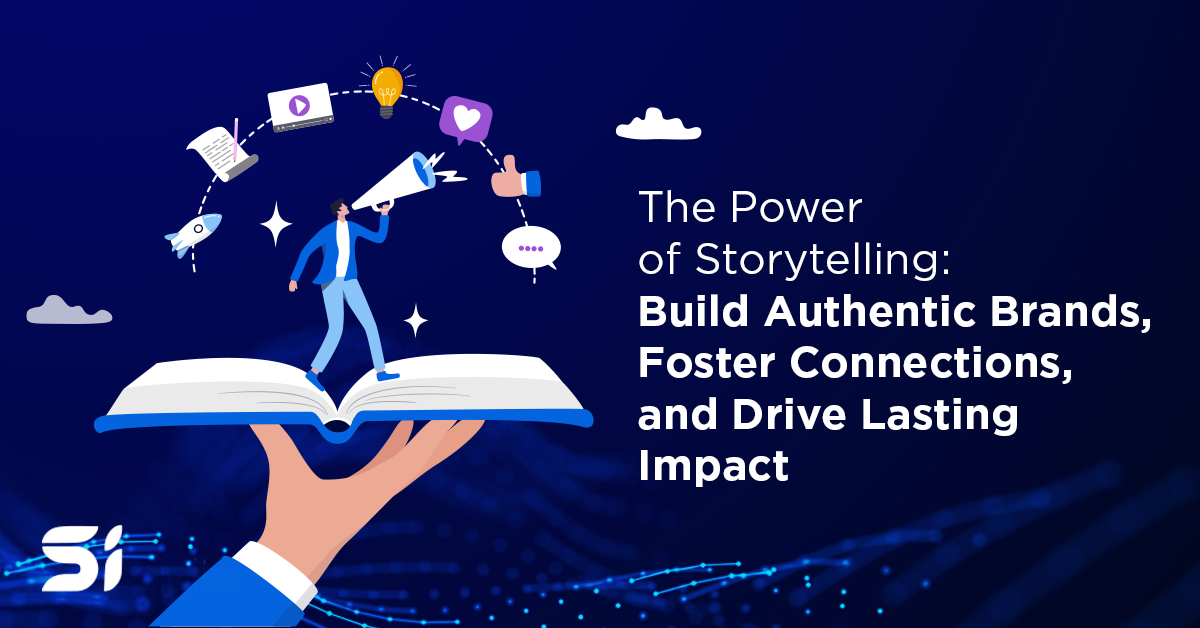The Power of Storytelling in Building Authentic Brand Connections

In today’s fast-paced digital landscape, brands face the challenge of engaging savvy, well-informed consumers while staying true to their core values. The answer? Storytelling. More than just a buzzword, storytelling is a timeless strategy that drives brand authenticity, captures attention, and fosters lasting loyalty.
Storytelling: A Timeless Marketing Tool
Storytelling has been an essential part of human culture for thousands of years. As technology has evolved from oral traditions to digital platforms, the power of storytelling remains unchanged. Brands that embrace storytelling are able to communicate their values, mission, and vision in a way that resonates deeply with consumers. Through compelling narratives, brands can shape perception, strengthen their identity, and make a lasting impression.
The Consumer Shift: Power to the People
The digital revolution has placed information and influence in the hands of consumers. Social media allows customers to shape brand narratives and hold companies accountable in unprecedented ways. Brands now need to work harder to capture attention and, more importantly, build trust. Authentic storytelling is vital for establishing credibility and creating a loyal customer base.
Core Insights for Authentic Brand Storytelling
1. Stories Shape Perception
Storytelling is a powerful tool for conveying a brand’s core purpose. A well-crafted narrative helps consumers understand what a brand stands for, ultimately shaping its perception and memorability.
2. Staying Relevant Through Narrative
As consumer interests and social media trends evolve, brands must adapt their narratives to stay relevant. Embracing the cultural zeitgeist and tapping into current events keeps a brand’s story engaging and relatable.
3. Immersive Experiences Through Interactive Storytelling
Modern storytelling extends beyond traditional ads and blog posts. Interactive storytelling and transmedia experiences give consumers an immersive way to connect with brands on a deeper level. By creating engaging touchpoints, brands can foster stronger emotional connections with their audience.
4. Aligning Internal Culture for External Authenticity
Authenticity begins within the organization. When a brand’s values and mission are understood and embraced internally, it shows in external communications. This internal alignment creates a genuine and cohesive brand story that consumers trust.
5. Prioritizing Authenticity
Consumers today can quickly detect insincerity. Authentic storytelling is essential to earning trust and building long-term relationships. By staying true to a brand’s mission and values, companies can differentiate themselves in a competitive landscape.
Industry Leaders on Storytelling
To provide insights into the art of brand storytelling, these industry experts share invaluable perspectives:
- Seth Godin: Godin emphasizes the importance of creating unique, stand-out stories that resonate with the target audience.
- Ann Handley: Handley believes in the power of genuine, mission-driven narratives to build lasting connections.
- Simon Sinek: Sinek’s “Start with Why” approach encourages brands to lead with purpose, creating an emotional connection with the audience.
- Gary Vaynerchuk: Vaynerchuk advocates using social media to create authentic, interactive content that engages audiences and fosters a sense of community.
Leveraging Social Media for Authentic Engagement
Social media platforms provide unparalleled access to consumers, allowing brands to create more direct and meaningful connections. By sharing behind-the-scenes content, user-generated stories, and interactive campaigns, brands can showcase their authenticity. Positioning customers as heroes in the brand’s story can build loyalty and create a sense of belonging.
Design Thinking: Crafting Honest Narratives
By integrating Design Thinking into storytelling, brands can develop stories that are not only authentic but deeply resonate with their audience. This user-centered approach involves understanding the consumer’s perspective, empathizing with their challenges, and addressing their needs creatively. This approach ensures that stories are honest, relevant, and impactful.
Activity: Define Your Forces of Antagonism
For a more transparent and engaging story, brands can identify challenges they face, whether societal, competitive, or consumer-related. Embracing these obstacles as part of the narrative demonstrates resilience and commitment, enhancing trust and making the story more compelling.
Conclusion: Storytelling as a Strategy for Authenticity
Storytelling is a powerful, time-tested strategy for building brand authenticity in a crowded digital landscape. By embracing genuine narratives, brands can foster trust, loyalty, and meaningful connections that stand the test of time.
- Art
- Causes
- Crafts
- Dance
- Drinks
- Film
- Fitness
- Food
- Jocuri
- Gardening
- Health
- Home
- Literature
- Music
- Networking
- Alte
- Party
- Religion
- Shopping
- Sports
- Theater
- Wellness
- IT, Cloud, Software and Technology


